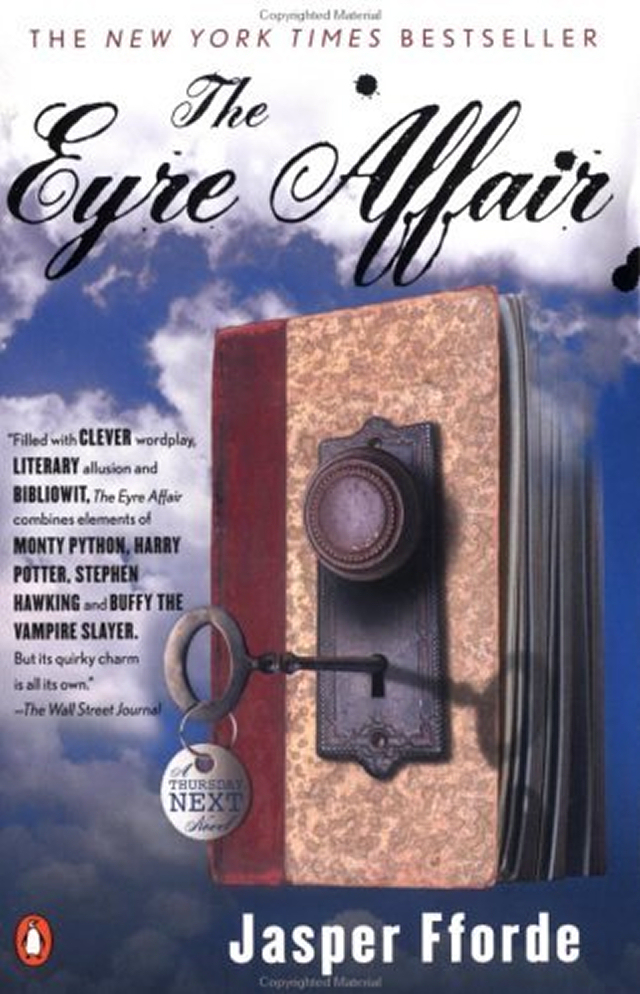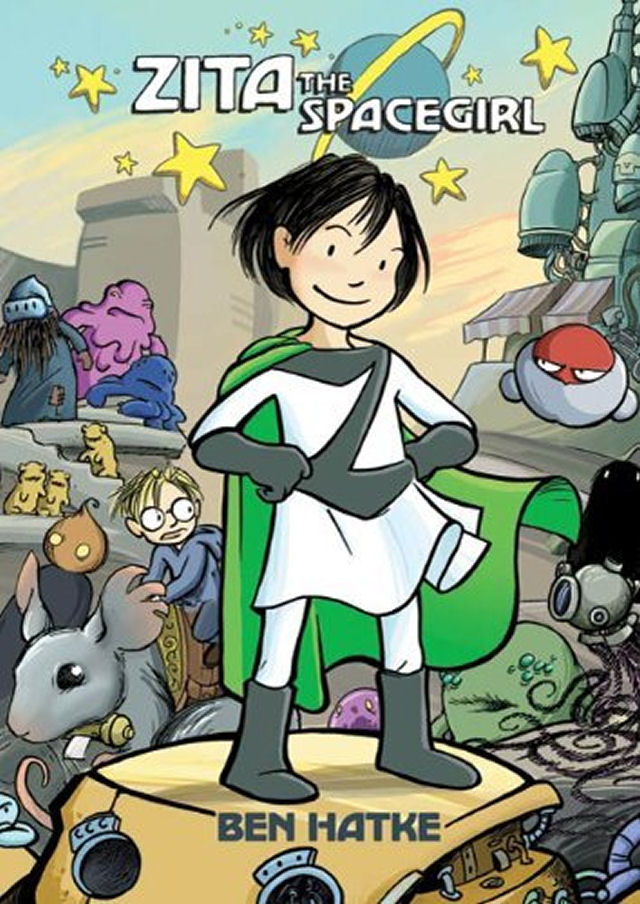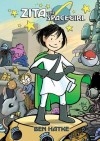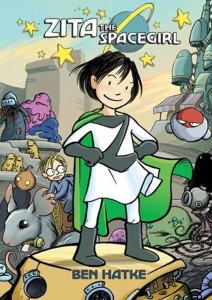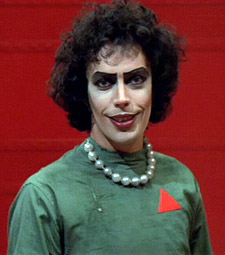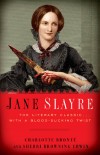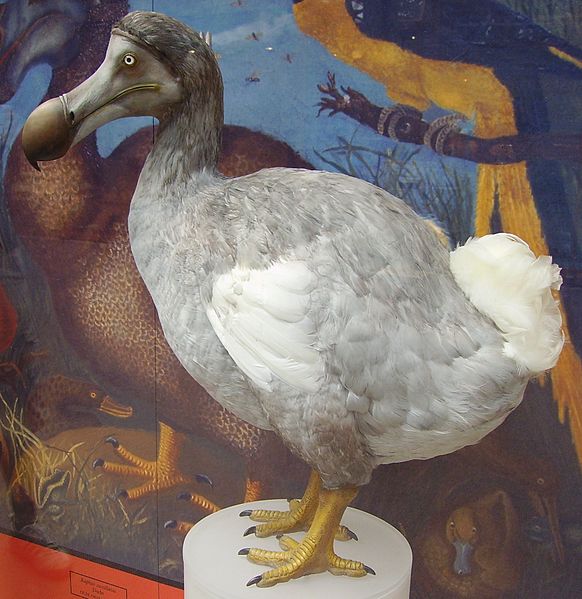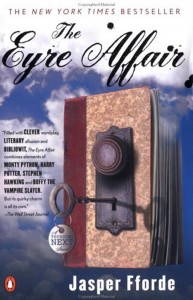 From the back cover:
From the back cover:
Welcome to a surreal version of Great Britain, circa 1985, where time travel is routine, cloning is a reality (dodos are the resurrected pet of choice), and literature is taken very, very seriously. England is a virtual police state where an aunt can get lost (literally) in a Wordsworth poem, militant Baconians heckle performances of Hamlet, and forging Byronic verse is a punishable offense. All this is business as usual for Thursday Next, renowned Special Operative in literary detection, until someone begins kidnapping characters from works of literature. When Jane Eyre is plucked from the pages of Brontë’s novel, Thursday must track down the villain and enter the novel herself to avert a heinous act of literary homicide.
Review:
The Eyre Affair takes place in an alternate version of 1980s England wherein Winston Churchill died as a teen, Wales is a socialist republic, and technology allows time travel to exist yet prohibits recording security camera footage on anything more advanced than a videotape (Fforde can dream big but not dream medium, it seems.) Literature is a very big deal in this universe: original manuscripts are kept under armed guard, kids trade Henry Fielding cards, ardent fans of John Milton abound, and literary crime (frauds, forgeries, etc.) is rampant. To combat this last, the Literary Detectives division of the Special Operations Network was formed.
Thursday Next has worked in the London office for eight years, handling mostly routine cases. When the original manuscript of Dickens’ Martin Chuzzlewit is stolen and master criminal Acheron Hades suspected, Thursday is called in because she was once a student of Hades and can identify him. Through a long and winding road that involes a transfer to Swindon, a bizarre detour into vampire-fighting, and attendance at an audience-participation rendition of Richard III, Thursday pursues Acheron, eventually into the pages of Jane Eyre, where their confrontation changes the outcome of the novel (into the version we know).
My list of complaints is longer than my list of compliments. I didn’t like the alternate universe very much, nor the ubiquity of cloned dodos, nor the silly names for some characters, nor the plot about the corrupt weapons dealer attempting to extend the Crimean War (already in its 131st year). The main problem, though, was Thursday herself, who is irritatingly perfect. She’s practically revered by the general public and every man wants her. Her former beau is willing to ditch his new fiancée if Thursday will just give the word. Her new partner is instantly smitten. Acheron Hades is impressed with her and declares her his greatest adversary. Hell, even Edward freakin’ Rochester from Jane Eyre has taken a shine to her!
On the brighter side, parts of the story that seem random do come together in a reasonably clever way (even the supernatural excursion into Slayerdom was eventually relevant) and I found Acheron quite amusing. He’s gleefully, hammily evil, so his appearances are quite fun, though I wonder how Thursday was privy to what was said in meetings at which she was not present (this being a first-person narrative and all). One baffling point is that, once he makes it into Jane Eyre, Acheron sort of sits around docilely for quite some time. It’s puzzling, but by that point in the novel I was just shaking my head and saying “whatever†whenever such things occurred.
Ultimately, I am torn. You’d think that with my general meh feeling about the world and decidedly less positive view of its protagonist, I would be firmly opposed to continuing the series, but that is not, in fact, the case. I’m willing to give it one more shot, at least. Maybe it will grow on me.
